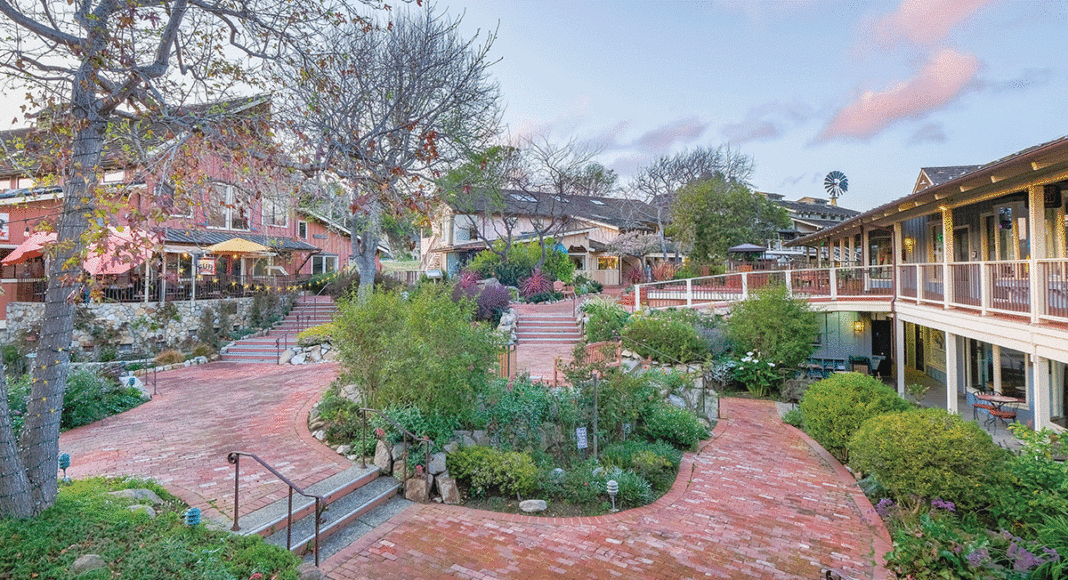First came the fire.
The wildfire that ripped through Big Sur for 82 days, from July through October of 2016, not only tore up the Los Padres National Forest—costing the state $236 million—it also quickly prompted Big Sur’s Henry Miller Library to cancel its shows. The library, a favorite hangout spot for many Santa Cruzans, was eventually shut down and evacuated, as were many towns in the area.
The rainy winter hardly provided a reprieve as landslides routinely cut off Highway 1. After the Pfeiffer Canyon Bridge shifted, the library closed its doors. CalTrans has since torn that Highway 1 bridge down, and construction on its replacement has just begun.
“We immediately lost $50,000 the day the bridge fell,” said Magnus Toren, executive director of the Henry Miller Library.
The bulk of the library’s revenue stems from booking private events, says Toren—all of which were immediately cancelled upon the February closure. Today, Toren says losses may have climbed close to $100,000, although a GoFundMe campaign has recouped roughly $42,000.
The Henry Miller Library, known for the quirky slogan “Where Nothing Happens,” is essentially a nonprofit bookstore, with lots of art and an expansive patio and lawn for lounging. The library is a beloved pit stop for many traveling along Highway 1, including visitors from Santa Cruz. Alex Johnston, a UCSC film scholar, routinely visits the library with his wife, Kit Rutter. Whether enjoying a coffee on the lawn or an intimate concert under the stars, Johnston says the library is the perfect spot to unwind.
“It’s a really nice, no-pressure place with a couple fat cats that always hang around,” says Johnston, who was upset when he first read of the library’s temporary closure. “It’s terrible. We have so few of these holdover spaces from a different period in California’s history, from a moment when California wasn’t just Silicon Valley.”
Around this time of year, says Toren, the library would reliably receive “thousands” of visitors. Today, would-be patrons instead show their support through donations, which followed quickly after the closure. Although donating to the library in the midst of natural disaster may not seem like the biggest priority for some philanthropists, Toren says he’s glad so many have found artistic value in his venue.
“It is very gratifying, and I hope people continue to recognize that the art in our community isn’t frivolous, that it is very necessary,” he says.
Library fans like Johnston and Rutter will have to wait months before the Big Sur location reopens, as Pfeiffer Canyon Bridge is scheduled to be finished Sept. 30. Toren was among the last few allowed to cross the bridge before it was demolished.
“By the time we drove across,” says Toren, “you could actually see the guardrail starting to crack.”
There are other slides too, including one south of Big Sur that could keep Highway 1 closed for a year.
By no means is the Henry Miller Library the only group affected by the natural disasters. Though the some Big Sur businesses remain open, many inns and restaurants are shut down, and for stretches of time the only way in or out of the coastal mountain region was via helicopter. The Big Sur Taphouse, Big Sur Deli and Nepenthe remain open, providing some respite for locals stuck there.
Sarah Shashaani, event manager for the Henry Miller Library, has been working from home most days. Shashaani, a UCSC grad, says going into Carmel takes “a minimum two hours if everything goes to plan”—which it never seems to.
“More like three,” she adds.
Toren, still recovering from a recent hip surgery, says that to leave town, he must hike out of his Big Sur home down a footpath and around to the canyon’s opposing side. From there, he and his wife drive to the Library’s new satellite location, known as “the Barnyard,” which just opened May 28.
In Carmel, Miller’s letters and photographs adorn the Barnyard’s walls. Dedicated supporters of the library ensured the unveiling went off with “overwhelming positivity,” says Toren, and high attendance has persisted throughout the week thanks to a movie screening on the reintroduction of California condors to Big Sur. The already-sold-out Big Sur International Short Film Screening Series begins June 8, promising more crowds.
Even in the face of natural disaster, Toren finds solace in the “blessed isolation” bestowed to southern Big Sur. The lack of auto and foot traffic has added to the local wildlife’s courage, he says, and reminds him of why he first moved there.
“You go hiking in the back country and, for once, you’re actually alone,” says Toren. “For once, the shoreline birds are out en masse. For once, you can see a mountain lion walk down the highway. All those things are peculiar to this special isolation.”













